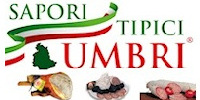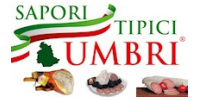Our network:
Tuesday 29 July 2025
Cathedral of San Lorenzo
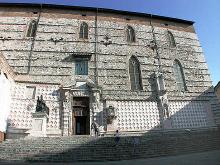 |
| Cathedral of Saint Lorenzo |
Building continued until 1587, however, without ever coming to an end - as is clearly visible in the unfinished appearance of the exterior.
The pink and white stone decoration on the exterior facades was taken from the cathedral of Arezzo in 1335 but was only completed on the lateral facade facing the Fontana Maggiore.
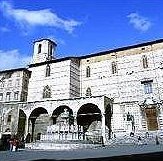 |
| Piazza IV Novembre |
The interior is late Gothic in style and consists of three aisles of equal height divided by octagonal pillars surmounted by crossbow vaulting. It was altered in the 18th century, with the addition of stucco and other decorations such as the false marble painting over the of the columns, the altar and the paintings of the vaults.
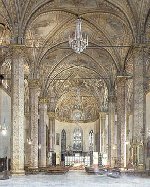 |
| Cathedral of Saint Lorenzo |
The bishop’s throne designed by Ciancio di Pierfrancesco is also here, as intended in the plans laid down by Rocco di Tommaso (1520-24). Perugia's most illustrious bishop was certainly Count Gioacchino Pecci, bishop from 1846 to 1878 when he was elected pope with the name of Leo XIII. The statue by Giuseppe Lucchetti (1892) placed in the right transept is dedicated to him.
The chapel to the right of the presbitery leads to the sacristy, which is decorated with frescoes by Giovanni Antonio Pandolfi di Pesaro (1572-78). The furniture dates back to 1494-97 and is by Mariotto di Paolo da Gubbio.
These rooms give access to the Cloister of the Parsonage (Chiostro della Canonica), where five episcopal conclaves were held in 1216, 1265, 1285, 1294 and 1305.
The nearby Museo Capitolare contains a variety of treasures including a 'Pietà' by Bartolomeo Caporali (1486), an altar-piece with a 'Madonna in trono' by Luca Signorelli (1484) and a triptych by Meo di Guido da Siena (early 14th century). The museum is currently closed for restoration.
Cattedrale di San Lorenzo
Piazza IV Novembre [old town centre]
Perugia, 06100
Info: Ph. +39 0755723832
Timetable of Holy Mass:
Mon-Tue-Wed-Thu-Fri-Sat: 7.20am - 8am – 9.30am - 11.am - 6pm
festive: 8.30am - 10am - 11.30am – 6pm
APM (Public municipal bus transport authority): stopped bus - Piazza Italia [only 200 meters away]
Linea 4, 6, 7, 9, 10, 11, 12, 13s, 13d, 15, 81, 82, 83, 87, bis28, bis31, bis34, bis39, bis41, bis44, bis50
Disabled access available
Piazza IV Novembre [old town centre]
Perugia, 06100
Info: Ph. +39 0755723832
Timetable of Holy Mass:
Mon-Tue-Wed-Thu-Fri-Sat: 7.20am - 8am – 9.30am - 11.am - 6pm
festive: 8.30am - 10am - 11.30am – 6pm
APM (Public municipal bus transport authority): stopped bus - Piazza Italia [only 200 meters away]
Linea 4, 6, 7, 9, 10, 11, 12, 13s, 13d, 15, 81, 82, 83, 87, bis28, bis31, bis34, bis39, bis41, bis44, bis50
Disabled access available
| Have a comment or question? Send a message to our editors at: contactus@perugiaonline.com |
| Up |

General information
• General travel tips • Weather information
• Tourist guides and visit guided in Umbria
• Local opening times
• Useful - emergency numbers
• Perugia for living
• Hospital Perugia
• Hospital Foligno
• Real Estates and Home Builders
• Homes for sale, property, apartments selling
Transport in town
• Traffic restrictions • Parking
• Buses & Taxis
• Town map
• How to reach Perugia by car
• How to reach Perugia by train
• How to reach Perugia by Air
Transport out of town
• Airport • Trains
• Rent a car
• Local and national buses

Where to Stay
• Hotels Map
OFFERS & LAST MINUTE
Where to eat and drink
• Restaurants and Trattorie • Pizzerie
• Pubs
• Restaurants Map
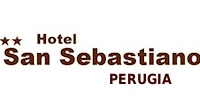
Art and monuments
• Rocca Paolina • Ipogeo dei Volumni
• Etruscan town walls
• Palazzo dei Priori
• Porta Sant' Angelo
• Acqueduct
• Maesta delle Volte
• Collegio della Mercanzia
• Collegio del Cambio
• Fontana Maggiore
Art and religion
• Cathedral of San Lorenzo • Church of San Filippo Neri
• Oratory of San Bernardino
• Church of Sant' Ercolano
• Church of San Domenico
• Church of San Pietro

Museums and galleries
• Historic Museum Perugina • Galleria Nazionale dell'Umbria
• Museo Archeologico
• Palazzo della Penna
• Accademia delle Belle Arti
• Museo di Storia Naturale
• Museo Capitolare San Lorenzo
• Cappella di San Severo
Art and tourist attractions
• Palazzo Capitano del Popolo • Botanical garden
Perugia News
Sorry, non news - i soggetti interessati a far conoscere le iniziative che avranno luogo nell'ambito del territorio comunale sono invitati a darne comunicazione con congruo anticipo utilizzando l'email redazione@umbriaonline.com
Regional News by Category
• MUSIC • EXHIBITIONS • COURSES • COMPETITIONS & PRIZES • FOLKLORE • EVENTS • DANCE & BALLET • MEETING & CONFERENCES • CONGRESS • KIDS • Typical Products FAIRS • THEATRE • SPORT EVENTS • LEISURE • LIFESTYLE • WHERE TO DINNER • NIGHTLIFE • CURIOSITY • VIDEO • BOOKS
What to see & do
• Itineraries & Museums in Umbria • Italian language courses
• The Amusement Park : La Citta della Domenica
• Golfing holidays
• Nature Walks Around Cascia:To Cascia via the Scoglio di Santa Rita, the vast rocky pyramid that dominates the village of Roccaporena
• Cooking courses
• Shopping in Perugia
• Perugia Hotel Tevere
• Assisi Villa Giulia
Lake Trasimeno
• General Information • The islands - boat tours
• Eating well by Lake Trasimene
• Bathing - Lake Trasimene
• Restaurants Map of Trasimeno area
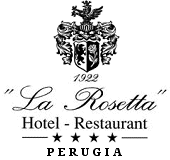
SPECIALS in Umbria - Italy
• Gift Ideas for traveling • Wellness in Umbria - Perugia area
• Weddings in Umbria
• Honeymooning in Umbria
• Charme & Relax in Umbria
• Home in Umbria
Education
• Language schools for Foreigners • Cooking schools
• University for Foreigners Perugia
• Design, Fashion, Visual arts and Communication Schools
• Perugia for Studying
• University
• Italian Army Foreign Language School
• Arts, Music, etc.
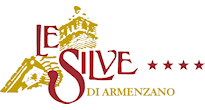
Typical products
• Norcia Ham IGP • Handicraft
• Mushrooms
• Truffles
• Extra Virgin Olive Oil
• Wine
• Meat
Flavours to taste
• Salumi Tipici Italiani online selling • Oleum Evo online selling
• Sapori Tipici Italiani buy now
• From the forest
